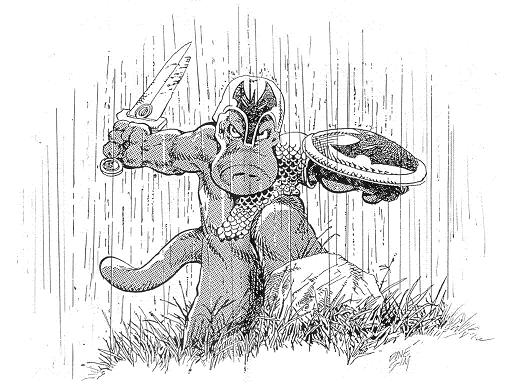
It’s a strange situation. First you had Dave Sim running a very successful Kickstarter campaign to republish the entire Cerebus series as high quality digital comics, including all the ephemeral content left out of earlier reprints. Then a fire destroyed many of the Cerebus negatives, which, combined with the end through low sales of his Glamourpuss project left Dave Sim pondering the end of his career as a cartoonist. Finally, this triggered a response from Fantagraphics, with head honcho Kim Thompson offering to reprint Cerebus in a more market friendly format:
I’d be perfectly happy to repackage the CEREBUS material in a more bookstore-friendly format than those fucking phone books and give the material the new lease on life it (or at least the first two thirds of it) so richly deserves.
Dave Sim responded and now you have what’s basically a contract negotiation happening in public, which Tom Spurgeon is right to think is absurd. Great fun though and it inevitably leads to thinking about how to start the series. As Kim Thompson put it:
Actually, I feel it absolutely must start at the beginning. CEREBUS is a very complex story and everything builds on what’s come before. The liability is of course that the first several issues are crude and jokey, so you’re not leading with the best work, but if you don’t make these available the stuff that follows is a lot harder to make sense of. That’s a curse of serial comics created by a developing cartoonist.
but there’s a solution to this dillemma and it’s not a difficult one: start with High Society. As Kim Thompson says, the problem with starting reprinting Cerebus from the beginning is that it started out int he late seventies as not that good a parody of Conan the Barbarian as well as other contemporary comics, one of the first wave of creator owned alternative comics, together with series like the Pinis’ Elfquest and Jack Katz The First Kingdom. These first few issues just aren’t that interesting, though Sim develops fast and gets more and more ambitious over time, but they are of a particular time and place and perhaps less interesting if you’re not a hardcore comics fan.
High Society is different. It’s one single story, originally told over twentyfive issues, which if I’m not mistaken was even the longest story told in American comics up to that time. It’s also the story in which Dave Sim came into his potential, complex, cynical, incredibly funny. Best of all, it’s also a story that really needs little to no introduction, no knowledge of what had gone before. All you need is half a page introducing Cerebus, then the story can start with him coing into Iest looking for a room to sleep and expecting to be thrown out of the city, only for everybody treating him with respect and fear and eager to make him happy, which drives him up the wall until he sees a way to profit from it. You don’t really need to know that Dirty Fleagle McGrew and his baby brother Dirty Drew were modelled after Canadian cartoonists Gene and Dan Day to enjoy the story. All you need to know is that it starts off a little bit like Nikolai Gogol’s The Government Inspector and take it from there.

